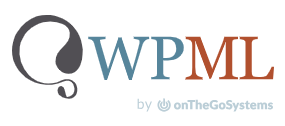Recently, as browser translation features have advanced, one might question whether it is necessary to prepare a separate multilingual website.
Today, we will think together about this question.
The Necessity of a Multilingual Website
While one might think that browser translation features suffice for basic translations, there are several beneficial reasons for directly preparing a multilingual website.
1. Accurate Translations and Natural Expressions
Since browser translation is a machine translation method, it often misinterprets context or produces awkward expressions. This is especially important in cases like marketing, legal, and technical documents where accurate meaning delivery is crucial.
For example, professional legal documents can have significant interpretation errors, so human intervention is necessary.
2. Search Engine Optimization (SEO)
Using browser translation only changes the content of the original page, and search engines do not recognize it as a multilingual page. In contrast, providing multilingual content directly can lead to better exposure to users of that language.
For instance, a Korean page would not appear when searched in English, right?
3. Improved User Experience
Providing a natural and intuitive interface in the language set by the visitor makes navigation much easier. Menus and buttons being translated enhance readability and usability.
On the other hand, with browser translation, images or dynamic content may not be translated, so this is also something to be mindful of.
4. Enhanced Brand Trust and Professionalism
Official multilingual support increases trust and significantly helps build a professional brand image in the global market.
If there are many awkward expressions due to machine translation, it can harm the brand image instead.
5. Compliance with Legal Requirements
Some countries have regulations requiring information to be provided in certain languages.
For example, Canada requires all information to be provided in English and French.
6. Maximizing Advertising and Marketing Effects
Having advertisements and landing pages in the same language tends to increase conversion rates. Communicating in the correct language in social media or email marketing also raises response rates.
7. Easier Customer Support and Communication
Having a multilingual page allows customers to easily obtain information and request support in their own language. Providing customer service and FAQs in multiple languages increases user satisfaction.
Conclusion
While browser translation features offer basic convenience, providing a professional multilingual website can yield greater benefits in various aspects such as SEO, user experience, brand image, and marketing performance.
When Creating a Multilingual Site in WordPress
If you are using WordPress, it would be efficient to use a multilingual plugin.
Multilingual plugins can be divided into those that translate in real-time, like GTranslate, and those that create and manage separate translations, like WPML.
Among these, real-time translation plugins (for example, the free version of GTranslate) are a good way to easily start multilingual support, allowing for quick implementation of a multilingual site with simple installation and automatic translation, but they have limitations such as lack of SEO support and lower quality of natural translations.
The comparison between GTranslate and WPML has been organized in a separate post.
WPML GTranslate SEO Comparison – COOSS.NET
As of March 2025, COOSS.NET is using WPML.

